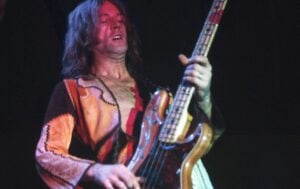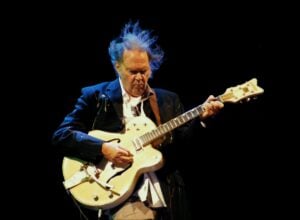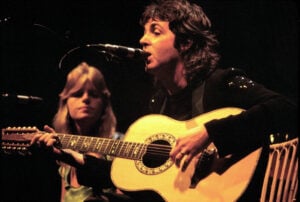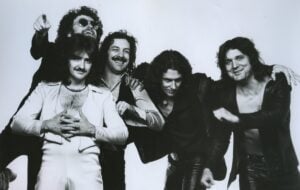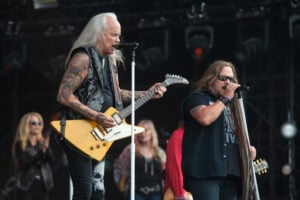The Best Rock Covers Of The 70s
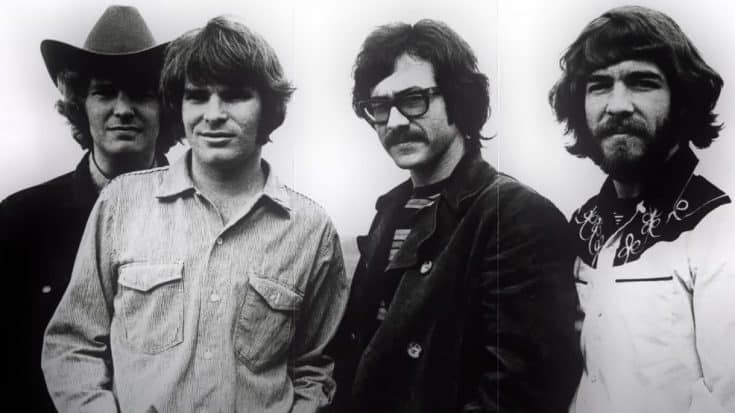
via Creedence Clearwater Revival / Youtube
Here’s our take on the best rock covers of the ’70s! While not an official ranking, we’ve handpicked and listed these iconic remakes based on their enduring popularity, cultural impact, and influence on classic rock fans over the decades.
“Papa Was a Rollin’ Stone” – The Undisputed Truth (1972) | The Temptations (1972)
The original recording of “Papa Was a Rollin’ Stone” by The Undisputed Truth featured a stripped-down, edgy vibe. Everything changed when The Temptations took control of it and transformed it into an incredible groove. Their 12-minute rendition turned it into a soulful trip by adding a hypnotic rhythm, a lot of drama, and a gorgeous orchestration. The song’s groovy rhythms and eerie story of a dysfunctional family made it unforgettable. Not only did this cover improve the song, it turned it into a legend.
“Wild Horses” – The Flying Burrito Brothers (1970) | The Rolling Stones (1971)
The Flying Burrito Brothers gave “Wild Horses” a gentle, country-influenced tone in 1970, highlighting Gram Parsons’ moving vocals. The Rolling Stones’ now-iconic rendition, which added a rock edge while retaining its soulful core, was released a year later. The song’s eternal appeal was attributed to Keith Richards’ exquisite guitar work and Mick Jagger’s eerie vocals. “Wild Horses” is a profoundly moving ballad about love, grief, and longing because both renditions convey a genuine emotion.
“Me and Bobby McGee” – Roger Miller (1969) | Janis Joplin (1971)
Roger Miller’s 1969 recording of “Me and Bobby McGee” has a relaxed, rustic charm. However, Janis Joplin’s 1971 performance transformed it into an uplifting hymn. Because it was published posthumously, her powerful, raspy voice imparted an emotional depth that made it unforgettable. Miller’s rendition was reflective, while Joplin’s rendition is unvarnished, gritty, and full of heartbreak. Her renowned career was defined by this song, which was about love, freedom, and loss.
“Black Magic Woman” – Fleetwood Mac (1968) | Santana (1970)
Written by Peter Green, Fleetwood Mac’s 1968 original is a melancholy bluesy masterpiece. However, Santana’s 1970 rendition elevated it to a completely new level by including jazz fusion and Latin rock. The song gained a fierce, magical intensity that made it memorable because of Carlos Santana’s captivating guitar riffs and hypnotic rhythms. Fleetwood Mac’s rendition was subtle, but Santana transformed it into a captivating work of art, making it one of the most well-known versions ever.
“You Really Got Me” – Kinks (1964) | Van Halen (1978)
The Kinks’ 1964 original of “You Really Got Me” is often credited with shaping the future of rock with its raw, power-chord riff. Van Halen’s 1978 cover injected new life into the track, turning it into a high-energy anthem of the ’70s rock scene. Eddie Van Halen’s explosive guitar solos and David Lee Roth’s fiery vocals brought a heavier, faster twist, making it one of the defining songs of their career. The 1978 version paid homage to the classic while adding a fresh, hard-edged spin that captured the essence of Van Halen’s iconic sound.
“You’re No Good” – Dee Dee Warwick (1963) | Linda Ronstadt (1974)
Dee Dee Warwick’s emotional 1963 original song “You’re No Good” featured her strong vocals and was an R&B smash. With her rock-infused rendition in 1974, Linda Ronstadt introduced the song to a wider audience and put it in a whole new direction. Ronstadt’s rendition made it a memorable piece on her Heart Like a Wheel album by adding a layer of passion and a hint of twangy, country-rock sound. Her unique voice elevated the song to a timeless classic that continues to have an impact today, showing how a beloved song can evolve without losing its emotional impact.
“Oye Como Va” – Tito Puente (1963) | Santana (1970)
The renowned Tito Puente composed and performed “Oye Como Va” in 1963. It is a lively Latin jazz instrumental that is full of flare and rhythm. Santana added his distinctive Latin rock flavor to the classic song in 1970 by fusing catchy percussion with mellow guitar riffs. Keeping the essence of Puente’s original, Santana’s rendition of “Oye Como Va” became a tremendous hit and reached a wider audience. A timeless anthem that still gets people dancing today, Santana’s rendition elevated the song to new heights with its electrifying energy and enticing beat.
“Cocaine” – J. J. Cale (1976) | Eric Clapton (1977)
J. first wrote and recorded it. J. Cale’s 1976 song “Cocaine” has a catchy riff, a hint of bluesiness, and a smooth, easygoing vibe. The song was given a sharper, more energizing vibe by Eric Clapton in 1977 while keeping its distinctive groove. Because of Clapton’s impressive guitar playing and the song’s high radio appeal, his rendition gained more recognition. Although Clapton’s version, which is frequently connected to his live performances, turned the song into an anthem of the time, Cale’s original version is a calm, subtle masterpiece.
“Proud Mary” – Creedence Clearwater Revival (1969) | Ike & Tina Turner (1970)
Creedence Clearwater Revival’s Southern rock classic “Proud Mary” perfectly encapsulates the group’s distinctive fusion of rock, blues, and country elements. The story of a riverboat life and a need for change is told in the original, which has a steady beat and harsh vocals by John Fogerty. The song was dramatically transformed into a soulful, upbeat hymn in 1970 by Ike & Tina Turner. “Proud Mary” became a timeless classic in both rock and soul music thanks to Tina’s powerful vocals and the lively, funk-driven arrangement, which produced a bold, energizing rendition that became the duo’s defining song.
“The Loco-Motion” – Little Eva (1962) | Grand Funk Railroad (1974)
Little Eva’s popular pop single from 1962, “The Loco-Motion,” became a contagious dancing anthem with its upbeat melody and humorous lyrics. Little Eva’s rendition was a quintessential pop-soul song from the early 1960s. Grand Funk Railroad gave the song a harder rock flavor in 1974, drastically changing its direction. Their rendition turned the once-lighthearted song into a strong, hard-hitting composition by adding a driving pace, amplified guitars, and raw intensity. The end product was a distinctive cover that boldly added a new touch while keeping the original’s charm.















